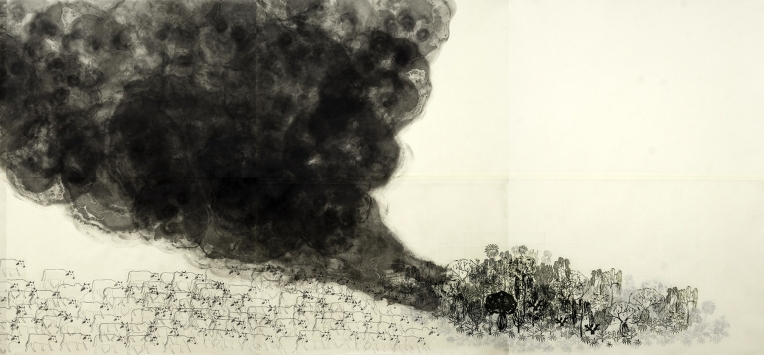
Miriam Rudolph was born and raised in Paraguay, South America. In 2003 she moved to Winnipeg to study Fine Arts at the University of Manitoba where she graduated with a Bachelor of Fine Arts Honours in 2007 and a Bachelor of Education in 2010. From 2011 – 2014, Miriam lived in Minneapolis where she continued to make prints at the Highpoint Center for Printmaking. She is currently in her third year of the Master of Fine Arts in Printmaking program at the University of Alberta, Edmonton and her thesis exhibition is coming up in February 2017. She was awarded the University of Alberta Graduate Recruitment Scholarship in 2014 and the Joseph-Armand Bombardier Graduate Scholarship (SSHRC) along with the Walter H. Johns Graduate Fellowship, as well as the Alberta Foundation for the Arts Scholarship for Art and Design in 2015. Recently, she co-won the first prize (Best in Show) at the 5th Biennial International Footprint International Exhibition at the Center for Contemporary Printmaking in Norwalk, Connecticut. She has shown her work nationally and internationally in Asunción-Paraguay, at the China Print Museum in Guanlan/China, at Global Print 2013 in Douro/Portugal, at the International Print Center New York, at the Highpoint Center for Printmaking in Minneapolis, in Washington D.C., at Martha Street Studio in Winnipeg, in Toronto and Ottawa.
Artist Statement
In my MFA thesis work, I research global issues of agribusiness models in third world countries, ensuing environmental consequences of the expansion of monocultures such as soy and beef exports to the developed world, as well as connected indigenous land rights and food sovereignty issues. The imagery in my work is inspired by first hand observations in Paraguay, South America – the country of my childhood – and readings connected to my research. Through my artwork, I am building a visual narrative that not only analyzes but also embodies the issues I am addressing. The physical and chemical process of leaving marks on the surface of a copper plate by etching it in acid lends itself remarkably well to my narrative imagery, allowing me to edit and layer the images. In some of my prints, for example, I layer printed images over and over again to build up large-scale imagery that dwarfs smaller counterparts to portray power relationships. In other instances, I print on both sides of a translucent Asian paper, allowing the paper to embody a physical barrier between the past and the present. In another series, I explore the imagery of lightly etched figures of men, women and children, fences crossing the entire image, and detailed drawn sections of dense forest printed upside-down and disappearing off the edge of the paper. The translucency of the figures suggests a lack of presence, either a distant past or a disappearing future for these people, while the other image elements hold symbolic meaning of separation or enclosure and the disappearance of the dry forests, an inversion of the natural order. While my research is very specific to a certain region in South America, the issues I address are global issues and also lend themselves to comparison with Canada’s colonial heritage. The resulting artwork will enable dialogue on such issues as cultural change, sustainable farming, and the environment, bringing international attention to the rapid alteration and destruction of the Chaco region.











